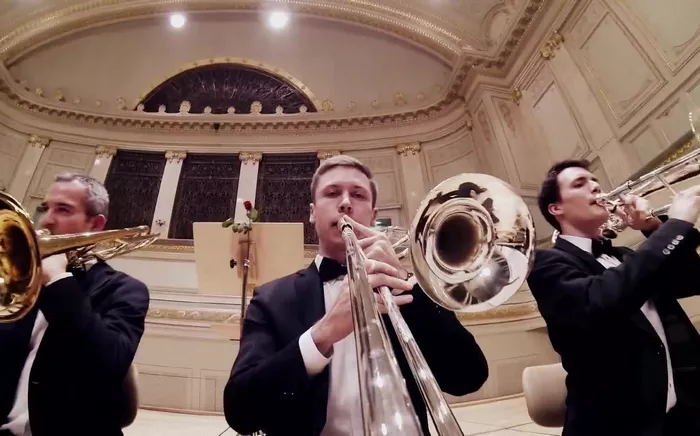The trombone, often hailed for its rich and resonant tones in the lower registers, has a longstanding reputation as a stalwart of the brass section. However, there’s more to this versatile instrument than meets the ear. In the realm of musical notation, the treble clef has a well-established role, primarily associated with instruments like the violin and flute. But can the trombone, traditionally assigned to the bass clef, venture into the world of treble clef? This article explores the possibilities and implications of the trombone’s adaptability, shedding light on the musical horizons it can expand.
Understanding the Treble Clef
The treble clef, often called the G clef, is a fundamental symbol in music notation. Placed at the beginning of a musical staff, it indicates the pitch range for a given instrument. Instruments such as the violin, flute, trumpet, and clarinet are inherently designed to read the treble clef. The notes displayed on this staff correspond to higher pitches, allowing for the expressive rendering of melodies and harmonies. The treble clef is a vital component of the traditional Western music system and is integral to the composition and performance of countless pieces.
Transcending the Norm: Trombone in Treble Clef
While the trombone’s natural habitat is indeed the bass clef, musicians have not been deterred from exploring the treble clef. The question then arises: can the trombone effectively navigate this higher-pitched territory?
The answer is a resounding yes. Trombonists have demonstrated their adaptability by mastering the treble clef when necessary. This versatility opens up a world of possibilities for the instrument, allowing it to engage in a broader range of musical styles and collaborations.
Is playing the treble clef difficult for trombonists?
Playing in the treble clef presents certain challenges for trombonists. The most apparent obstacle is the adjustment to reading notes in a higher register. While the trombone is fully capable of reaching these notes, the shift can be disorienting for musicians primarily accustomed to the bass clef. However, with dedication and practice, trombonists can overcome this hurdle.
One of the significant opportunities that arise from playing in the treble clef is the ability to participate more seamlessly in orchestras and ensembles where the majority of instruments read in this clef. This adaptability allows trombonists to take on a broader range of roles, including playing melodious lines and harmonizing with other treble-clef instruments.
Expanding Repertoire
By embracing the treble clef, trombonists can explore a wider array of musical genres and compositions. This shift enables them to tackle pieces originally written for instruments like the trumpet or clarinet. It also paves the way for solo performances where the trombone takes on a more lyrical and melodic role, showcasing its dynamic range and tonal flexibility.
What trombonists who want to master the treble clef need to know?
For trombonists looking to explore the treble clef, mastering the transition requires a structured approach. Here are some steps to consider:
1. Study Music Theory:
Understanding the treble clef and its note placement is essential. Invest time in learning the fundamentals of music theory to make the transition smoother.
2. Practice Reading Treble Clef:
Begin with simple exercises and gradually work your way up to more complex pieces written in the treble clef. Consistent practice is key to building confidence.
3. Collaborate with Treble-Clef Musicians:
Playing alongside musicians who are well-versed in the treble clef can be incredibly instructive. It allows you to learn from their expertise and adapt to different playing styles.
4. Explore Diverse Repertoire:
Don’t limit yourself to a specific genre. Explore a variety of musical styles and compositions that incorporate the treble clef.
5. Seek Guidance:
Consider taking lessons or seeking guidance from experienced trombonists who have successfully navigated the transition to the treble clef.
See Also: Can a Bass Trombone Play Tuba Parts: A Full Guide
Conclusion
The trombone’s ability to play in the treble clef is a testament to its adaptability and versatility. While it may be traditionally associated with the bass clef, this instrument can transcend boundaries and explore new musical frontiers. Trombonists who embrace the treble clef open up a world of opportunities, from expanding their repertoire to collaborating with a diverse range of musicians. With dedication and practice, the trombone can masterfully navigate the treble clef, enriching the world of music and contributing to its ever-evolving tapestry. So, to all trombonists out there: embrace the challenge, unlock the potential, and let your trombone soar in the treble clef.


